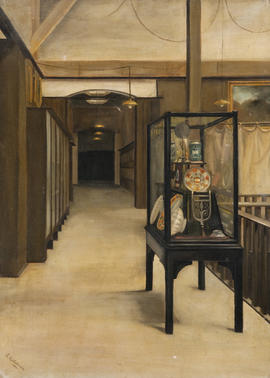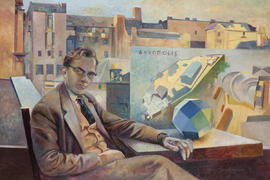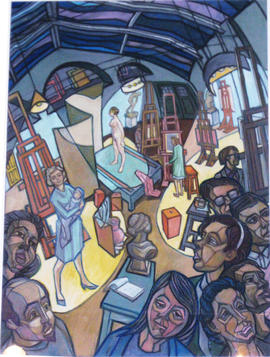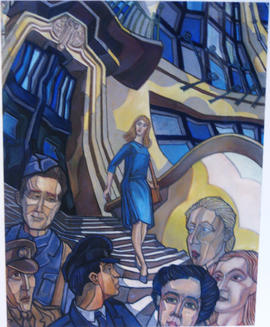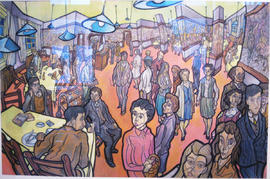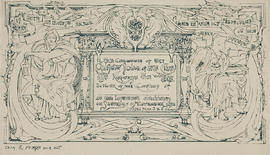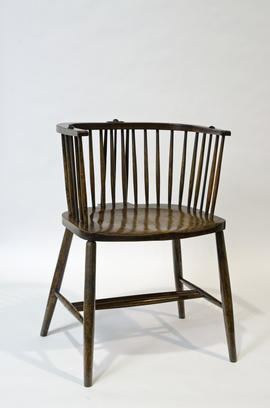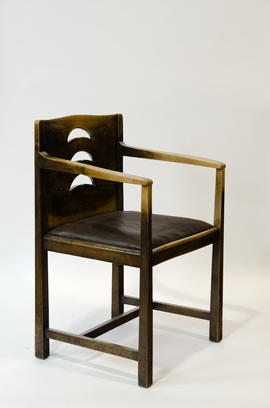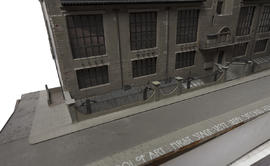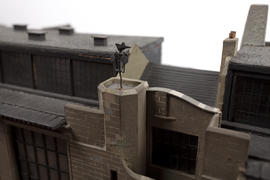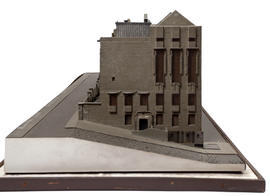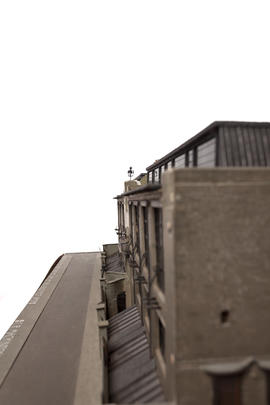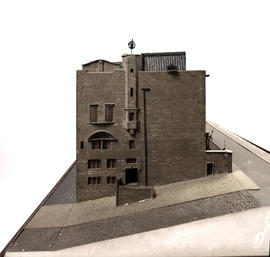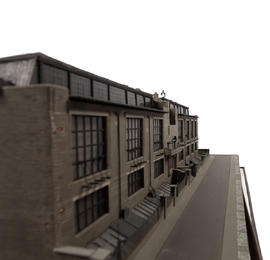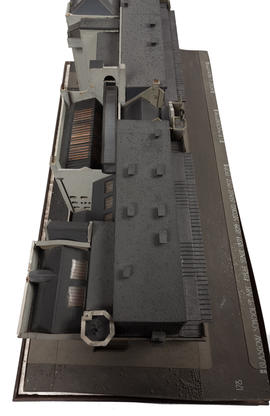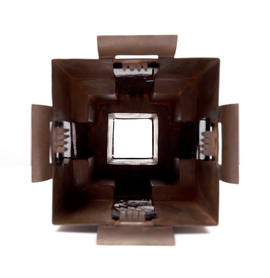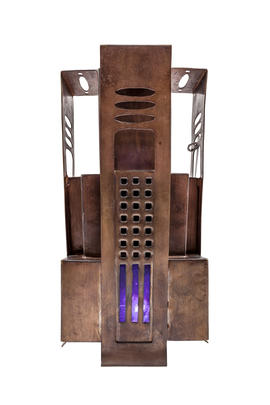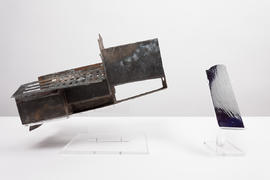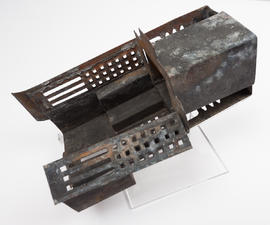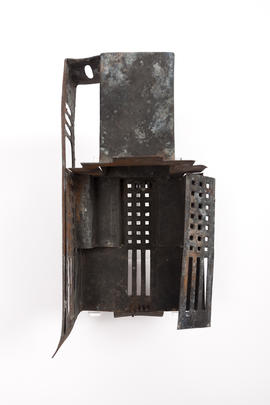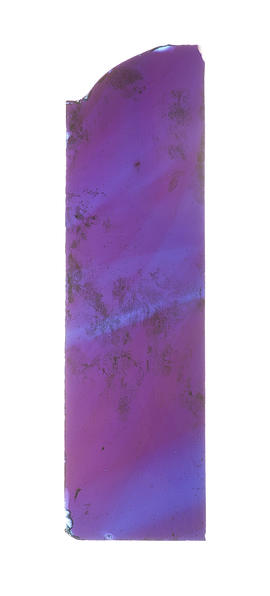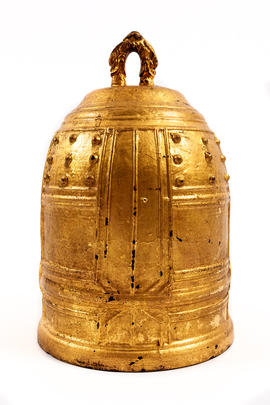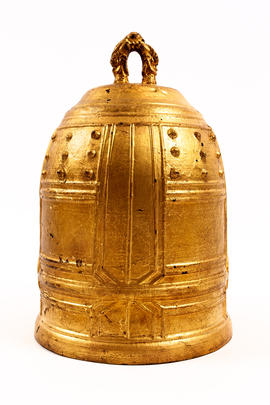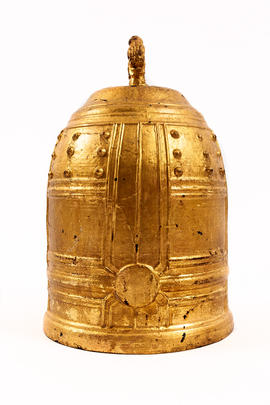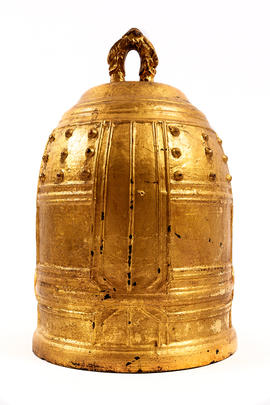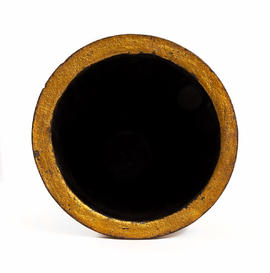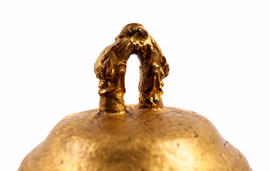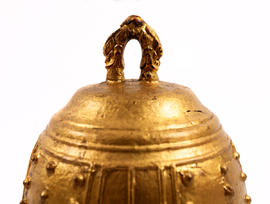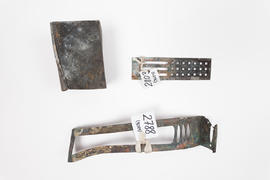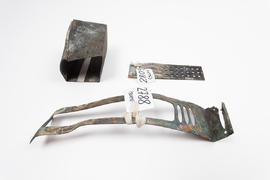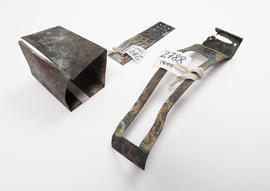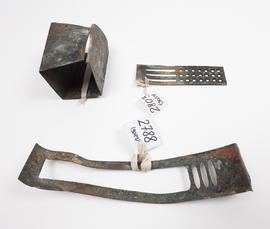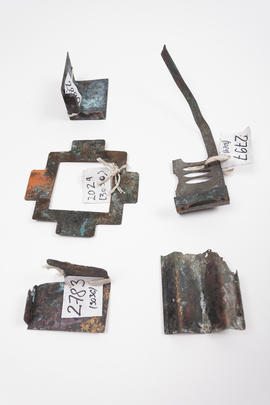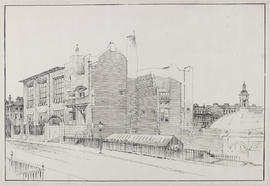This item was lost in the fire in The Mackintosh Building at The Glasgow School of Art on 23rd May 2014. GSA students and staff featured in this work include (from left to right), amongst others: Harry McLean, GSA student and conservator (seated at table bottom left, resting elbow on table); Hugh Adam Crawford, GSA staff, Drawing and Painting department (standing, front-facing, slightly left of centre); Joan Eadley, GSA student and artist (centre, standing, facing left); John Miller, GSA staff, Drawing & Painting department (slightly right of centre, facing right, carrying portfolio under right arm); Margot Sandeman, GSA student and artist (slightly right of centre, facing right, arms folded, in conversation with Cordelia Oliver); Cordelia Oliver, GSA student, art critic and journalist (slightly right of centre, facing left, in conversation with Margot Sandeman); Margaret McGavin, GSA student and artist (right of centre, adjacent to Cordelia Oliver, front-facing but looking right, in conversation with another female student); David Donaldson, GSA staff, Drawing and Painting department (right of centre, left-facing, positioned between Margaret McGavin and the female student she is talking to); Benno Schotz, GSA staff, Modelling and Sculpture department and sculptor (right hand side, facing left); Timothy Powell, GSA staff, Graphic Design department (right hand side, in the foreground, front-facing, wearing a suit).

